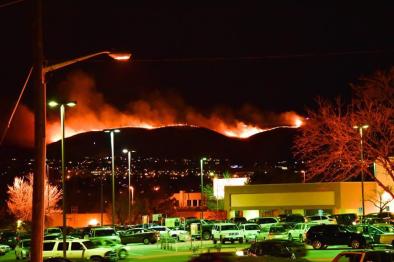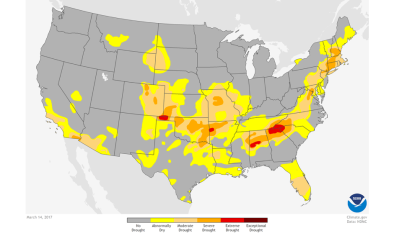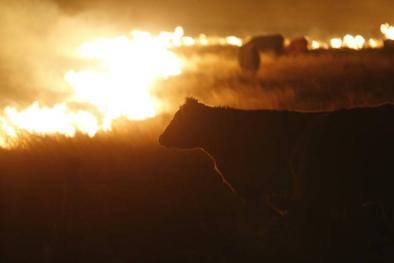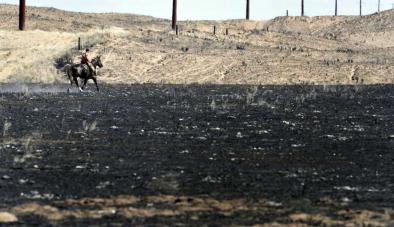Q&A: A look at questions about current US wildfires
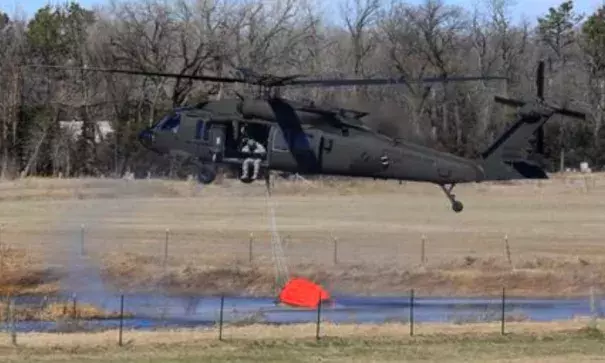
WHAT'S BURNING?
A two-county wildfire in Kansas has consumed an estimated 861 square miles of land, eclipsing last year's record for the biggest single blaze in the state's recorded history. Kansas Division of Emergency Management spokeswoman Katie Horner says the estimated 625 square miles charred in Clark County as of Wednesday is about 85 percent of that county's total land, with an additional 236 square miles lost in Comanche County. Horner tells The Associated Press that that number in the two predominantly ranching-and-farming counties appears certain to grow. The previous record for the most-widespread Kansas blaze came last year, with the Anderson Creek fire in Barber and Comanche counties consuming 488 square miles of land.
Horner says that since last Saturday, large grassfires have been reported in 23 Kansas counties, consuming more than 1,000 square miles. At least 70 structures in Kansas have been damaged or destroyed.
In addition, three wildfires in the Texas Panhandle have burned nearly 750 square miles of rural land, while more than 540 square miles of property has been blackened in Oklahoma. Dozens of square miles also have been charred in northeastern Colorado.
...
WHAT'S STOKING THE FLAMES?
Parched conditions amplified by strong winds and low humidity put the region at risk for wildfires. All of eastern Colorado is classified as either moderately or abnormally dry along with much of Kansas and Oklahoma, and some of northern Texas, according to the U.S. Drought Monitor, a weekly tracker of dry conditions across the U.S.
Noting the abundance of vegetation fuel, drought conditions and windiness in the southern central Plains, Liz Leitman, a Storm Prediction Center meteorologist, said Wednesday that "everything has come together to overlap to create a pretty volatile situation."
...
COULD CLIMATE CHANGE BE IN PLAY?
In 2013, University of Illinois atmospheric sciences professor Don Wuebbles warned that the frequency and intensity of wildfires likely would increase in the coming years, given the confluence of such factors as higher temperatures, untamed underbrush and less rain.
Wuebbles, a co-author of a draft federal report linking climate change to an increase in severe weather trends, postulated then to National Geographic that "this probably is the new normal."
"Thirty years from now, we may look upon this as being a much better period than what we may be facing then," he said then.
WHAT'S THE COST?
Officials in the states affected by the ongoing wildfires haven't released estimates of the economic losses from damaged or destroyed homes, businesses and livestock - or the expense of firefighters' efforts to knock down the flames. But it's expected those costs will run well into the millions of dollars.
During last year's massive wildfire along the Kansas-Oklahoma border, for example, firefighting costs reached $1.5 million in Barber County - the Kansas county hardest hit by that blaze. That county's emergency management chief, Jerry McNamar, said the county's economic losses included 750 to 800 cattle that died in the county, along with at least 2,700 miles of fence, worth $27 million, that was destroyed.
Related Content
